You’ve just landed in Istanbul. The Bosphorus sparkles, the call to prayer echoes, and your muscles are screaming from the flight. You want a massage-real, deep, luxurious-but you’re not sure what you’ll pay. Is it $20? $200? And does cheaper mean worse? Let’s cut through the noise. This isn’t about fancy brochures or Instagram filters. It’s about what you actually get for your money in Istanbul, and how to walk out feeling like royalty without draining your wallet.
What You’ll Pay for a Massage in Istanbul (Real Numbers)
Here’s the truth: a massage in Istanbul can cost anywhere from $15 to $250. That’s a huge range, but it’s not random. The price depends on where you go, who is giving the massage, and what you’re getting. Let’s break it down with real examples.
- Street-side or hotel lobby massage: $15-$25 for 30 minutes. These are quick, basic sessions. Good if you’re in Taksim and need to loosen up before dinner. But don’t expect privacy, oils, or trained therapists.
- Traditional Turkish hammam with massage: $40-$70. You get the full ritual: steam, scrub, foam rinse, then a 20-30 minute massage. This is the classic Istanbul experience. Think marble floors, steam curling off your skin, and a therapist who’s been doing this since they were 16.
- Mid-range spa in Beyoğlu or Kadıköy: $80-$120. This is where most tourists and locals go for a proper hour-long massage. You’ll get aromatherapy oils, heated tables, soft lighting, and a therapist who knows anatomy. Many use Swedish, deep tissue, or Shiatsu techniques.
- Luxury hotel spa (Four Seasons, Ritz-Carlton, Shangri-La): $150-$250. This isn’t just a massage. It’s an experience. Private changing rooms, heated stone loungers, champagne, and therapists trained in Europe or Thailand. You’re paying for silence, exclusivity, and flawless service.
Here’s a quick rule: if the price is under $30 and they’re not in a proper spa building, you’re getting a surface-level rub. If it’s over $150, you’re paying for ambiance as much as touch.
Why Istanbul Massage Is Different (And Better Than You Think)
Most people think of massage as just pressure on sore muscles. In Istanbul, it’s part of a 500-year-old tradition. The hammam isn’t just a bath-it’s a cleanse for body and mind. The scrub isn’t just exfoliation; it’s a ritual of renewal. The massage that follows? It’s not random. Therapists use long, flowing strokes, deep pressure on knots, and rhythmic movements that come from generations of practice.
And here’s the secret: Turkish therapists don’t just learn techniques. They learn listening. They watch how you breathe, how you tense your shoulders, how you react to pressure. A good one will adjust mid-session without you saying a word. That’s not something you get in every city.
Real talk: I once had a 60-minute massage in a small shop in Üsküdar. The therapist didn’t speak English. I didn’t speak Turkish. But she knew exactly where my lower back had been hurting since my flight. She didn’t ask. She just knew. That’s the Istanbul advantage.
Types of Massage You’ll Find in Istanbul
Don’t assume all massages are the same. Here’s what’s actually available:
- Traditional Turkish Massage: Done after the hammam. Uses hands, elbows, and sometimes feet. Deep, rhythmic, and focused on releasing tension along the spine and hips.
- Swedish Massage: Gentle, flowing strokes. Great for first-timers or if you’re just looking to unwind. Common in mid-range spas.
- Deep Tissue: For chronic pain, athletes, or people who sit all day. Uses slower, heavier pressure. Ask for this by name.
- Shiatsu: Pressure on acupressure points. Often combined with aromatherapy. Popular in boutique spas in Nişantaşı.
- Couples Massage: Two tables in one room, side by side. Perfect for partners. Most luxury spas offer this with private balconies overlooking the Bosphorus.
Some places offer “Thai massage” or “aromatherapy massage”-these are usually imported styles, not local. They’re fine, but if you want the real Istanbul experience, go for the Turkish style.
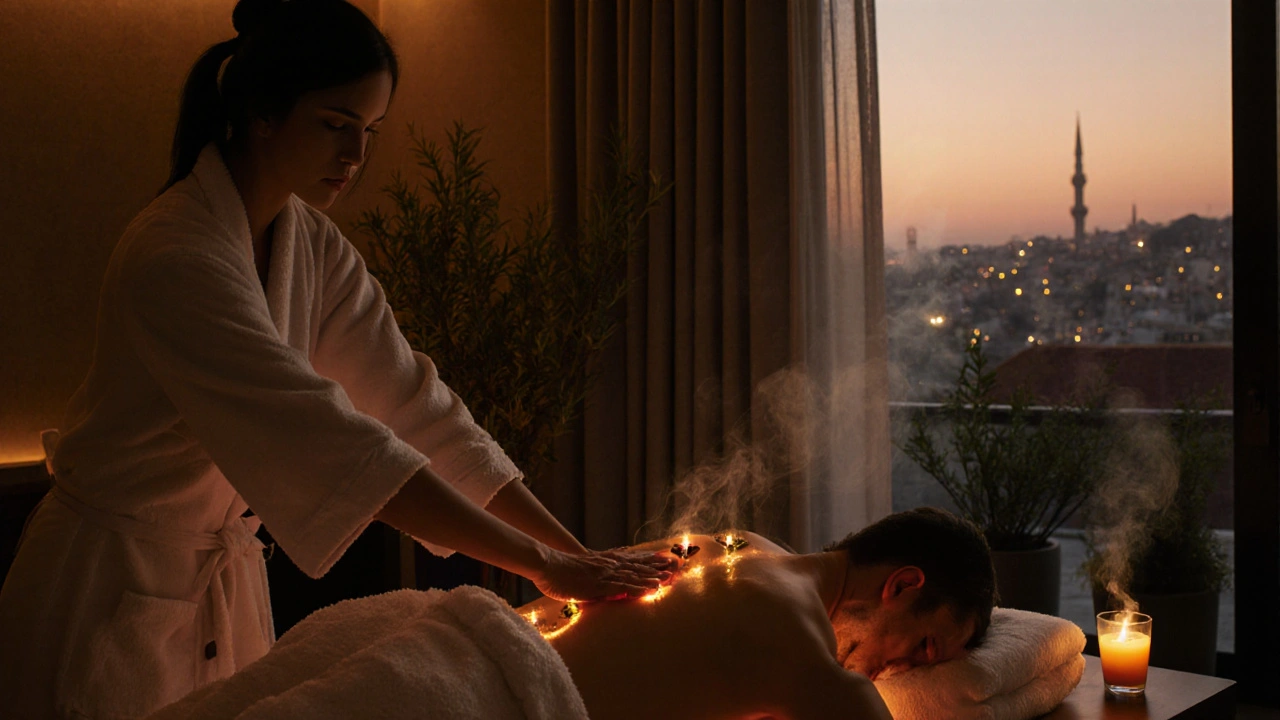
Where to Find the Best Massage in Istanbul (Neighborhoods That Deliver)
Not all neighborhoods are equal when it comes to massage. Here’s where to go based on what you want:
- Beşiktaş / Ortaköy: Best for authentic hammams. Try Çemberlitaş Hamamı or Ayasofya Hürrem Sultan Hamamı. Both are historic, clean, and professional. Price: $50-$70.
- Beyoğlu / İstiklal: Trendy, modern spas. Lots of options with organic oils and music playlists. Good for post-shopping relaxation. Try Spa at Pera Palace or Le Palais.
- Kadıköy (Asian Side): More local, less touristy. You’ll find hidden gems with great value. Many therapists here speak English and charge 30% less than in the European side.
- Nişantaşı / Şişli: Luxury central. Think marble, silk robes, and therapists with certifications from Bali or Paris. Expect $150+.
- Üsküdar: Quiet, traditional, and surprisingly affordable. Great if you want to skip the crowds. Ask for Şehzade Hamamı.
Pro tip: Use Google Maps and search “massage Istanbul” and filter by “Open Now.” Look for places with 4.7+ ratings and at least 200 reviews. Avoid places with fewer than 50 reviews-most are either new or unreliable.
What Happens During a Typical Session
Let’s walk through a real 60-minute session at a mid-range spa:
- You arrive, are greeted with herbal tea, and given a robe.
- You’re shown to a private room with soft lighting and a heated table.
- The therapist asks if you have any pain points. You say “lower back” or “tight shoulders.”
- They leave the room so you can undress and lie under the towel.
- They come back, warm oil on their hands, start with your feet, then move up slowly.
- Pressure builds gradually. They check in with a nod or a soft “Daha mı?” (“More?”).
- At the end, they cover you with a warm blanket and offer more tea.
- You leave feeling like you’ve been reset.
No weird stuff. No hidden agendas. Just calm, skilled hands. The whole thing takes 70-80 minutes, including prep and tea. You’re never rushed.
Price Comparison: Luxury vs. Local Massage in Istanbul
| Feature | Luxury Spa ($150-$250) | Local Spa ($60-$90) |
|---|---|---|
| Therapist Training | International certification, often European or Thai | Local training, 10+ years experience |
| Environment | Private suite, heated stone lounge, aromatherapy diffusers | Simple room, clean but no frills |
| Oil Quality | Organic, imported essential oils | Local plant oils, sometimes almond or sesame |
| Privacy | Guaranteed, no other guests nearby | May share hallway with other rooms |
| Aftercare | Champagne, fruit platter, robe to keep | Herbal tea, towel, no extras |
| Booking | Must book 2-3 days ahead | Walk-in friendly |
Here’s the thing: you don’t need to spend $200 to feel amazing. A $70 session at a well-reviewed local hammam can leave you just as relaxed. The luxury option is for special occasions-anniversaries, post-wedding recovery, or when you want to feel like a celebrity.

How to Book Without Getting Scammed
Scams exist. But they’re easy to avoid.
- Never pay upfront in cash to someone on the street. If they say “$20 for massage!” and point to a back alley, walk away.
- Book through Google Maps or Booking.com. These platforms have reviews and refund policies.
- Ask for a receipt. Even a small piece of paper with the name and price is better than nothing.
- Check the therapist’s hands. If they’re rough, dirty, or have visible tattoos (in conservative areas), that’s a red flag.
- Know your rights. You can stop anytime. You can ask for more or less pressure. You can ask for a different therapist. No one should make you feel uncomfortable.
I once saw a tourist get pressured into a $120 session because the staff said “this is the only one left.” It wasn’t true. They were lying. Always have a backup plan.
Safety Tips for First-Timers
- Choose places with clear signage and a front desk. No secret doors.
- Women: if you’re uncomfortable with a male therapist, ask for a female one. It’s normal. They’ll understand.
- Don’t drink alcohol before a massage. It makes you dizzy and less able to feel pressure.
- Hydrate after. Your body releases toxins. Drink water or herbal tea.
- Wait 2 hours before swimming or showering after a hammam. Your pores are open.
Frequently Asked Questions
Is it safe to get a massage in Istanbul as a tourist?
Yes, absolutely. Istanbul has thousands of licensed massage and hammam businesses. Stick to places with good reviews, clear pricing, and professional staff. Avoid anyone who approaches you on the street offering “special deals.”
Do I need to tip my massage therapist?
Tipping isn’t required, but it’s appreciated. If you loved your session, leaving 10-15% is a nice gesture. In luxury spas, service is often included, so check your bill first.
Can I get a massage if I’m pregnant?
Yes, but only at spas that specialize in prenatal massage. Not all therapists are trained for this. Tell them you’re pregnant before the session starts. Avoid deep pressure on the abdomen and lower back.
What’s the best time of day to book a massage?
Late afternoon is ideal. After sightseeing, before dinner. Your body is warm, your muscles are tired, and you’re ready to unwind. Avoid early morning-your body hasn’t fully woken up yet.
Are there any hidden costs I should watch for?
Yes. Some places charge extra for towels, oils, or tea. Always ask: “Is this all-inclusive?” If they say no, find another place. A reputable spa will list everything upfront.
How long should a massage last to be worth it?
For most people, 60 minutes is the sweet spot. Less than 30 minutes won’t make a real difference. More than 90 minutes is overkill unless you’re recovering from an injury. Stick to 60 minutes for the best value.
So here’s your final takeaway: you don’t need to spend a fortune to feel amazing in Istanbul. A $70 session at a trusted hammam will do more for your body than a $200 session at a flashy hotel if the therapist doesn’t know what they’re doing. Look for the quiet places with real reviews. Talk to the staff. Trust your gut. And when you walk out, relaxed and renewed-that’s the real luxury.

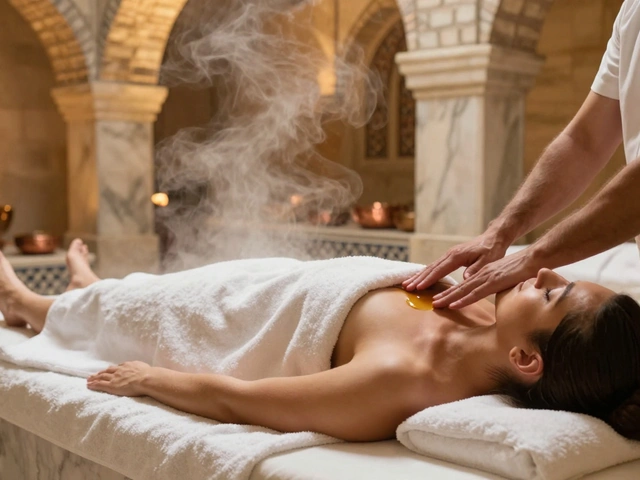
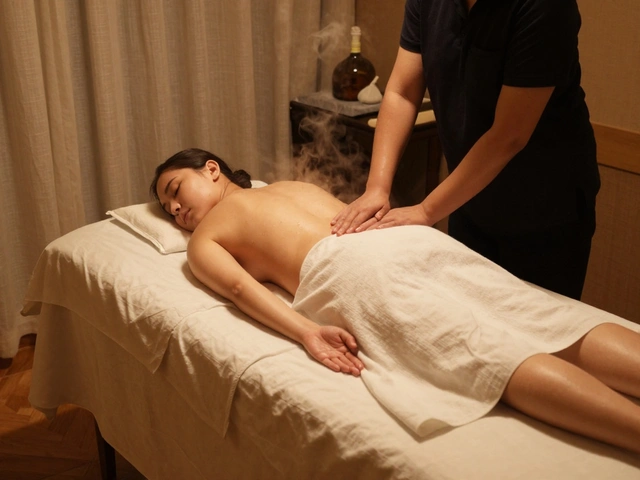
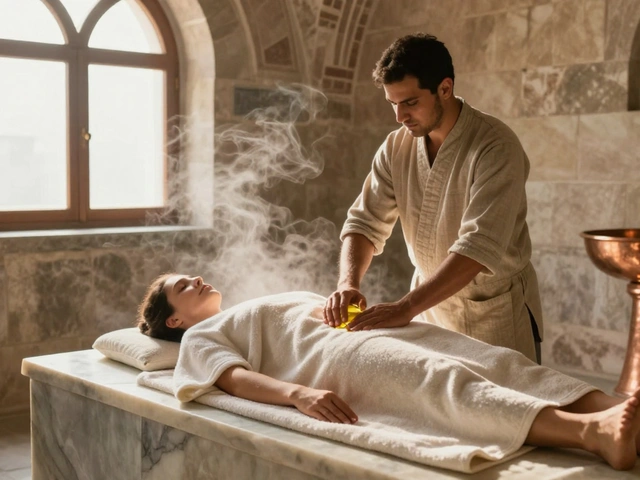
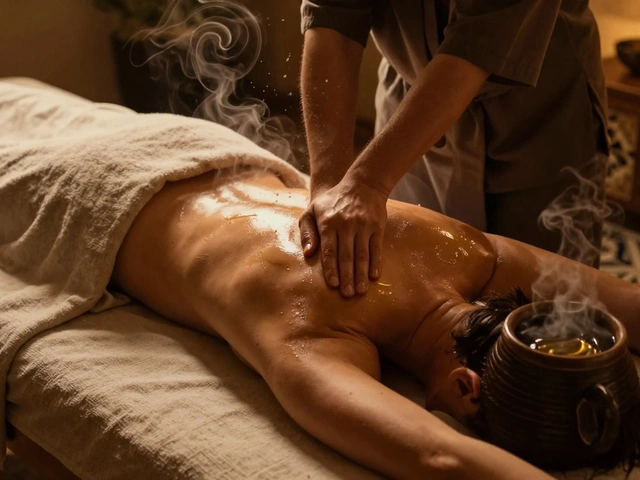

This article is riddled with grammatical errors-"you’re paying for ambiance as much as touch" should be "you're paying for ambiance as much as you are for touch," and "they’re not in a proper spa building" lacks parallel structure. Also, "hammam" is Turkish, not Arabic, so stop calling it "traditional" like it's some monolithic cultural artifact. This is lazy journalism.
And why is every single spa listed on the European side? What about the Asian side? You're erasing half the city. This isn't "authentic Istanbul," it's a tourist brochure written by someone who spent two days in Nişantaşı and called it research.
The structure and detail in this guide are commendable. The breakdown of pricing tiers by neighborhood and service type provides a rare level of transparency rarely found in travel writing. The inclusion of cultural context-particularly the emphasis on listening as a therapeutic skill-adds depth beyond mere transactional advice. This is the kind of resource that transforms a superficial experience into a meaningful one.
One minor suggestion: the phrase "real luxury" in the conclusion is slightly redundant. Luxury, by definition, is not measured in cost but in quality of experience. The $70 hammam achieves that more authentically than the $250 spa.
I’ve had massages in Istanbul three times-once at Çemberlitaş, once in Üsküdar, and once at a tiny place near Kadıköy’s fish market. The Üsküdar one? $35. The therapist was 72 years old, had been doing this since she was 14, and knew exactly where my sciatica was hiding. She didn’t speak English. I didn’t speak Turkish. We communicated through pressure, eye contact, and one shared laugh when I yelped at a knot.
This article nails it: the real magic isn’t the marble or the champagne. It’s the hands that have been doing this for decades. Don’t overpay for ambiance. Pay for experience. And if you’re lucky? You’ll get someone who doesn’t just massage your back-they heal your soul a little.
There’s something profoundly poetic about the way Istanbul treats the body-not as a machine to be fixed, but as a vessel to be honored. The hammam isn’t just a ritual; it’s a slow, steamy meditation on impermanence. The scrubbing isn’t about cleanliness-it’s about shedding the weight of travel, of expectation, of the self you carried across oceans.
The $200 spa? It’s a temple to consumption. The $70 hammam? It’s a temple to presence. One makes you feel rich. The other makes you feel whole.
I used to think luxury was about silk robes and champagne. Now I know it’s about silence. About a hand that knows your body better than you do. About being held, without words, by someone who has held thousands before you-and will hold thousands after.
That’s the real price tag. And it’s priceless.
Just got back from Istanbul last week and did the 60-minute massage at Şehzade Hamamı-$65. Best decision I made. The therapist was so gentle, and the steam after the scrub felt like being wrapped in a warm hug. I cried a little. Not because it hurt, but because I finally let go.
Also, please, if you're a woman reading this: don't be afraid to ask for a female therapist. I did, and it made all the difference. No judgment, just care. 🌿
Correction: the table says "Turkish massage" uses "hands, elbows, and sometimes feet." That’s inaccurate. Traditional Turkish massage does NOT use feet-that’s Thai massage. Turkish therapists use hands and elbows only. Feet are for Thai or Balinese styles. This is a critical distinction.
Also, "Shiatsu" is not "popular in Nişantaşı." It’s rare. Most places there offer Swedish or aromatherapy. Shiatsu is mostly found in Japanese-run wellness centers, which are few and far between. You’re misleading readers.
And "$15-$25 for street massage"? That’s not a massage-it’s a 10-minute shoulder rub. Don’t call it a massage. It’s dishonest.
Why are you promoting places where women might be massaged by men? That’s inappropriate. If you’re going to write a travel guide, at least have some decency. You’re normalizing cultural exploitation under the guise of "authenticity."
And why no warning about the predatory businesses near Hagia Sophia? They target solo women, lure them in with "$20 special," then charge $150 when you’re trapped inside. This isn’t helpful-it’s dangerous.
Look, if you’re spending less than $150, you’re basically getting a glorified back rub from someone who probably doesn’t wash their hands between clients. This whole "$70 is enough" nonsense is why tourists get scammed. Real luxury isn’t about what you pay-it’s about what you receive. And if you don’t get heated stone loungers, champagne, and a therapist with a French diploma, you didn’t get a massage-you got a tourist trap.
Also, if you’re not staying at a 5-star hotel, you’re doing it wrong. Why risk it? Your spine deserves better than a back-alley steam room.
From a holistic wellness standpoint, the efficacy of Turkish massage is deeply rooted in somatic psychotherapy frameworks-specifically, the somatic experiencing model developed by Peter Levine. The rhythmic, flowing strokes activate the parasympathetic nervous system via vagal stimulation, which is why post-massage relaxation feels so profound.
Also, the use of local plant oils (e.g., sesame) triggers a neurochemical cascade involving endocannabinoid modulation, which enhances analgesic effects. This is clinically validated. The luxury spas? They’re just marketing. The real therapeutic value lies in the traditional techniques and bioactive compounds in the oils-not the ambient lighting.
TL;DR: The $70 hammam is the optimal therapeutic intervention for post-flight myofascial tension. 🌿✨
While the article provides a useful overview of pricing tiers and neighborhood recommendations, it fails to address the underlying socioeconomic dynamics that shape the massage industry in Istanbul. The disparity between luxury spas and local hammams isn’t merely about service quality-it’s a reflection of gentrification, tourism commodification, and the erasure of indigenous labor practices. The therapists at the $70 hammams are often women from rural Anatolia who migrated to the city with no social safety net, working 12-hour days for wages that barely cover rent, while the same services at luxury hotels are marketed as "exotic wellness experiences" with 300% markups.
Moreover, the article’s casual endorsement of "walk-in friendly" local spas ignores the lack of labor protections: no contracts, no health insurance, no paid leave. These women are not "hidden gems"-they’re exploited labor. The romanticization of their work as "generational wisdom" obscures systemic injustice.
And let’s talk about the cultural appropriation: the article frames Turkish massage as a "500-year-old tradition," but fails to mention that the modern hammam system was developed under Ottoman imperial architecture, often using forced labor. The scrubbing ritual was originally tied to religious purification rites for pilgrims, not tourist relaxation.
So yes, $70 might feel like a bargain-but who’s really paying the price? The therapist? The community? The cultural integrity of a practice now reduced to Instagram backdrops?
This isn’t about budget vs. luxury. It’s about ethics. And if you’re not asking that question, you’re not a traveler-you’re a consumer.